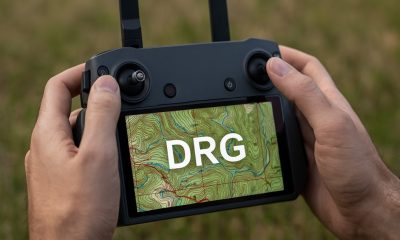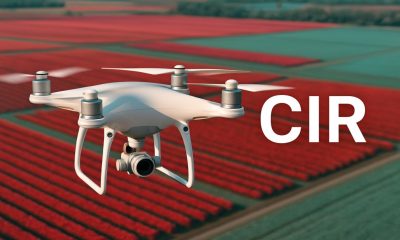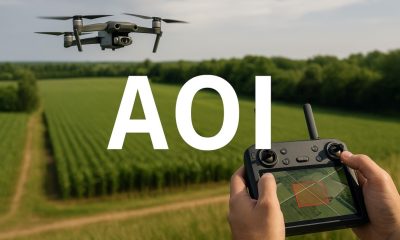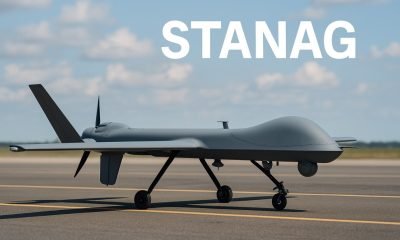- Acronym Guide
- AAM
- ABS
- AC
- ACAS
- ADS-B
- AFAC
- AGL
- AI
- AIM
- ALS
- AM
- AMA
- ANSP
- AOI
- APPI
- AUV
- AUVSI
- ARPAS-UK
- ASTM
- ATC
- BVLOS
- CAA
- CAAC
- CAB
- CASA
- CATT
- CBO
- CBR
- CBRN
- CDMA
- CDR
- CFR
- CIR
- COA
- COMINT
- CORS
- COTP
- COTR
- CPTED
- CV
- C2
- DAA
- DEM
- DFI
- DFS
- DGCA
- DHS
- DOD
- DPA
- DPEs
- DRG
- DRO
- DSM
- DSMX
- DSP
- DSSS
- DTM
- EASA
- EFT
- EO
- EOD
- EO/IR
- ELINT
- EMI
- ESC
- EVLOS
- eVTOLs
- FAA
- FCC
- FCS
- FHSS
- FICCI
- FLIR
- FOB
- FOV
- FPS
- FPV
- GBDAA
- GCP
- GCS
- GDPR
- GML
- GNSS
- GPS
- GSD
- GVC
- HDR
- HOGE
- IACRA
- ICAO
- ICS
- IMU
- INS
- IR
- ISA
- ISR
- ITU
- JARUS
- LAAMS
- LAANC
- LAATM
- LAI
- LBA
- LIDAR
- LOS
- LSALT
- MAC
- MAVLink
- MLIT
- MMS
- MSL
- MTOM
- NDAA
- NCSL
- NFZ
- NIST
- NMEA
- NOTAM
- NPA
- NPRM
- NTIA
- OBIA
- OEM
- OFDM
- OOP
- PASM
- PAV
- PCV
- PdM
- PEC
- PIC
- PID
- PIPL
- PLD
- PM
- PN
- PPK
- PPS
- PSM
- PWM
- UAM
- UAOP
- UAS
- UASTM
- UAV
- UCAVs
- UHD
- UHF
- USV
- UTM
- RAIM
- RCC
- RCS
- RFI
- ReOC
- RePL
- RMS
- ROI
- RPAS
- RPC
- RTH
- RTK
- SaR
- SAR
- SARP
- SBAS
- S.Bus
- SBIR
- SEDENA
- SfM
- SFOC
- SIGINT
- SLAM
- SMS
- SORA
- STANAG
- STTR
- sUAS
- TCAS
- TCCA
- TFR
- TIN
- TOF
- TP
- TPS
- TSA
- VHF
- VLOS
- VTOL
Drone Acronyms
What is AUV (Autonomous Underwater Vehicle) & How Does it Work?
By
Jacob StonerTable Of Contents
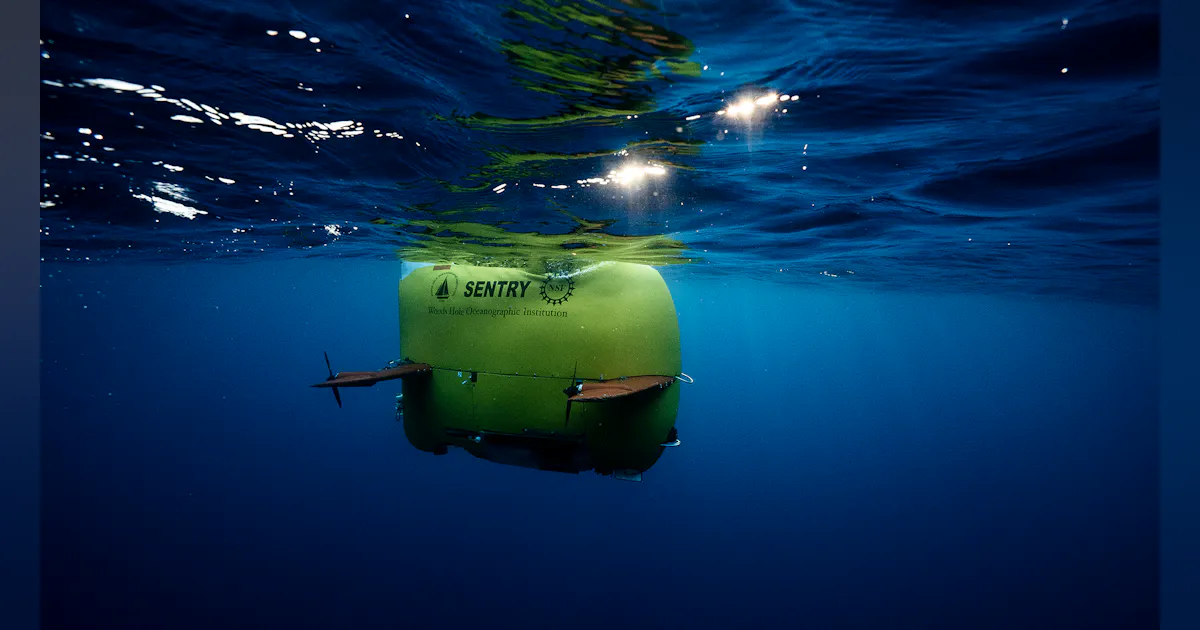
Definition
AUV stands for Autonomous Underwater Vehicle. It is a robot that travels underwater without requiring input from an operator. AUVs are equipped with various sensors and navigation systems that allow them to perform tasks independently.
Relevance to the Industry
AUVs are crucial for exploring and monitoring underwater environments, providing valuable data for scientific research, environmental protection, and industrial applications. Their ability to operate autonomously in challenging underwater conditions makes them indispensable tools for a wide range of missions.
How Does an Autonomous Underwater Vehicle (AUV) Work?
An Autonomous Underwater Vehicle (AUV) is a self-propelled, unmanned underwater robot that operates independently of human control to perform a variety of tasks in underwater environments. Here’s a detailed explanation of how AUVs work:
1. System Components
- Hull: The outer shell of the AUV, designed to withstand underwater pressure and protect internal components.
- Propulsion System: Includes thrusters or propellers that enable the AUV to move through the water.
- Control System: Onboard computers and software that control the AUV’s movements, navigation, and mission execution.
- Navigation System: Combines various sensors (such as GPS, inertial navigation systems, and Doppler velocity logs) to determine the AUV’s position and navigate underwater.
- Power Supply: Batteries or other energy sources that provide power to the AUV’s systems and propulsion.
- Sensors and Payloads: Equipment for data collection, such as cameras, sonar, environmental sensors, and sampling devices.
2. Mission Planning and Deployment
- Mission Planning: Operators pre-program the AUV with a mission plan, which includes waypoints, paths, depths, and tasks to be performed. The mission plan is uploaded to the AUV’s control system.
- Launch: The AUV is deployed into the water from a vessel, dock, or shore. It can be launched manually or using specialized deployment systems.
3. Autonomous Operation
- Navigation and Guidance: The AUV navigates autonomously using its navigation system. GPS is used at the surface, while inertial navigation systems and Doppler velocity logs are used underwater to maintain accurate positioning.
- Path Following: The AUV follows the pre-programmed path and waypoints, adjusting its movements based on sensor feedback and environmental conditions.
- Obstacle Avoidance: The AUV uses sonar and other sensors to detect and avoid obstacles in its path, ensuring safe operation.
4. Data Collection and Processing
- Sensor Operation: The AUV’s sensors and payloads collect data as it navigates its mission path. This data can include environmental measurements, images, sonar scans, and physical samples.
- Data Storage: Collected data is stored in onboard memory for retrieval after the mission. Some AUVs can transmit data in real-time via acoustic or radio communication links.
- Data Processing: The AUV’s onboard computers process sensor data to make real-time decisions, such as adjusting course or identifying areas of interest.
5. Mission Completion and Recovery
- Mission End: Upon completion of its mission, the AUV returns to a predetermined location for recovery. This location can be the launch point or another designated area.
- Recovery: The AUV is retrieved from the water manually or using automated recovery systems. Once recovered, the mission data is downloaded and analyzed by operators.
6. Applications and Use Cases
- Oceanography and Marine Research: AUVs are used to study underwater environments, collect oceanographic data, map the seafloor, and monitor marine ecosystems.
- Underwater Exploration: AUVs explore underwater caves, shipwrecks, and other inaccessible areas, providing valuable information for scientific and archaeological research.
- Environmental Monitoring: AUVs monitor water quality, track pollutant levels, and assess the health of coral reefs and other marine habitats.
- Oil and Gas Industry: AUVs inspect underwater pipelines, oil rigs, and other infrastructure, ensuring structural integrity and detecting potential issues.
- Military and Defense: AUVs perform surveillance, mine countermeasures, and reconnaissance missions, providing critical underwater intelligence.
- Search and Rescue: AUVs assist in search and rescue operations by locating submerged objects, aircraft, and vessels.
7. Advantages and Challenges
- Advantages: AUVs offer the ability to operate in hazardous and deep-sea environments, collect high-resolution data, and perform long-duration missions without human intervention.
- Challenges: Challenges include maintaining accurate navigation, ensuring reliable communication, and managing power consumption for extended missions.
Understanding how AUVs work highlights their versatility and importance in underwater exploration and research. By operating autonomously and collecting valuable data from beneath the surface, AUVs play a crucial role in expanding our knowledge of the underwater world and supporting various industrial and scientific endeavors.
Example in Use
“The research team deployed an AUV to map the seafloor and collect samples from deep ocean trenches, providing insights into marine ecosystems.”
Frequently Asked Questions about AUV (Autonomous Underwater Vehicle)
1. What is an AUV and how does it work?
Answer: An AUV (Autonomous Underwater Vehicle) is a robotic vehicle designed to operate underwater without direct human control. It is equipped with sensors, cameras, and navigation systems that allow it to carry out pre-programmed missions independently. AUVs navigate using technologies like sonar, GPS (when surfaced), and inertial navigation systems. They can perform a variety of tasks, including mapping, surveying, and data collection, and are often used in environments that are difficult or dangerous for humans to access.
2. What are the benefits of using AUVs?
Answer: The benefits of using AUVs include:
- Autonomous Operation: Capable of performing complex tasks without human intervention, reducing the need for manned missions.
- Extended Range: Can operate for long periods and cover large areas, collecting data from remote or hard-to-reach locations.
- High Precision: Equipped with advanced sensors and navigation systems, providing accurate and detailed data.
- Cost-Effective: Reduces the need for expensive manned operations and minimizes the risk to human life in hazardous underwater environments.
- Versatility: Used in various applications, from scientific research and environmental monitoring to industrial inspections and military operations.
3. What are some applications of AUV technology?
Answer: Applications of AUV technology include:
- Oceanographic Research: Studying marine ecosystems, mapping the seafloor, and monitoring ocean currents and temperature.
- Environmental Monitoring: Assessing the health of coral reefs, tracking pollutants, and observing the effects of climate change on marine environments.
- Industrial Inspection: Inspecting underwater pipelines, cables, and offshore structures for maintenance and safety.
- Search and Recovery: Locating and retrieving objects lost at sea, including sunken vessels and aircraft.
- Military Operations: Conducting surveillance, mine detection, and underwater reconnaissance.
For examples of these acronyms visit our Industries page.
As the CEO of Flyeye.io, Jacob Stoner spearheads the company's operations with his extensive expertise in the drone industry. He is a licensed commercial drone operator in Canada, where he frequently conducts drone inspections. Jacob is a highly respected figure within his local drone community, where he indulges his passion for videography during his leisure time. Above all, Jacob's keen interest lies in the potential societal impact of drone technology advancements.




